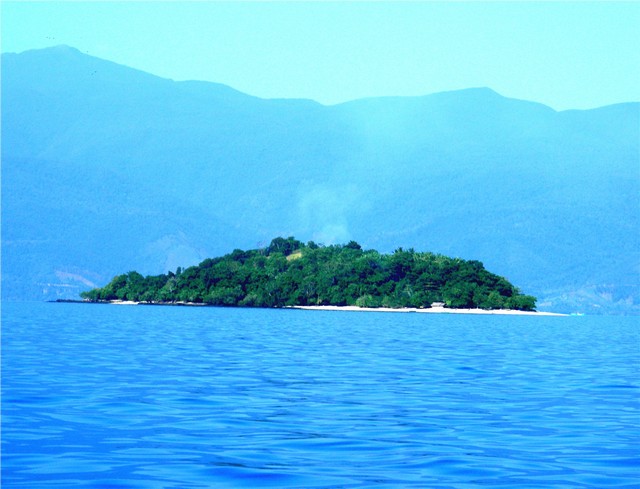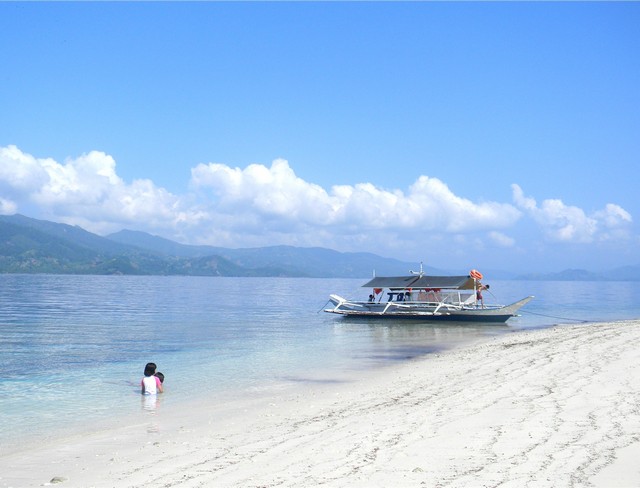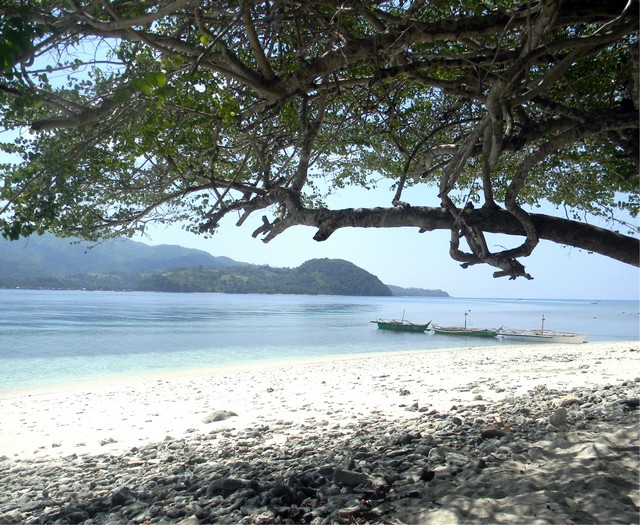Filtered By: Lifestyle
Lifestyle
Pujada and Waniban: Two 'secret' islands in the Davao region
Text and Photos by HENRYLITO D. TACIO

Waniban Island from a distance
For the last three weeks, I had been working every weekend: attending conferences, interviewing people, joining parties, and going out with friends. I had no chance of getting away from it all.
Just when I thought I would be staying at home last Saturday, I received a message from Michael H. Chan, a photographer who hails from General Santos City. “Can you accompany me going to Mati City?” he asked.
Mati, the lone city of Davao Oriental, is known for its stunning beaches, friendly people, gorgeous landscape, and agricultural products (coconut and pomelo). Throughout the year, people from other parts of the country and nearby provinces visit this southern city that faces the Pacific Ocean.
Since I had nothing to do anyway, I decided to go with Chan. We left early from Davao City and before lunch time, we were almost near Mati. We were at the zigzag road of barangay Badas when we opted to make a stopover to see Mati’s famous landmark – the Sleeping Dinosaur. It’s actually an island that resembles a submerged prehistoric creature.
When we were already in the city, we immediately went to the Casa Rosa, which would be our “home” for the next two days. After checking in, we proceeded to Seaside Restaurant, about 10 minutes away from the hotel.
“Each year, people from Davao and neighboring provinces come to our city,” said Dashiel Indelible, Jr., the head of the city tourism office, who joined us during our lunch. Last year, about 60,000 people visited Mati, with about 2,000 of them from other countries, particularly Japan, Korea, United States, and Europe.
People come to Mati for various reasons but mostly to go to the seven-kilometer white sand beach of barangay Dahican. “Guests and visitors can swim in the water, walk over the sand and have fun under the sun,” Indelible said. “Others who are adventurous can do skimboarding and surfing.”
Mati is dotted with beautiful islands, the tourism officer said. I agreed, “but I have never been to any of them yet,” I added.
“Why don’t you go with us tomorrow,” he replied. “My staff and I are going to two of these islands.”
Indelible was referring to the islands of Pujada and Waniban.  Davao's best kept secret
Davao's best kept secret

Crystal clear water and white sands of Pujada Island
Pujada Island, sandwiched between the fishing villages of Taganilao and Macambol, is a thickly forested 156-hectare island with a freshwater lake in the middle. Its landscape shows innocence to mankind’s innovation. The island is privately owned by the Angliongto clan of Davao City.
In the past, the Angliontos operated ferry barges that traversed Davao City and Mati long before the highways were built to connect Davao City, the capital of the then undivided province of Davao, to other major towns like Malita (now part of Davao del Sur) and Mati.
Pujada Island is perhaps Davao Region’s best kept secret. “Its cream powdery sands are much better than those found in Boracay,” commented Chan, who has been to the world famous beach several times.
If your thing is nature at its best, then Pujada Island is it. It has no huts, kiosks or commercial establishments. What you have are only the talisay and coconut trees that provide cover against rain and sun.
One journalist who visited the place penned these words to describe the place: “This uninhabited, secluded, and unspoiled island is a perfect getaway for anyone who wishes to escape the humdrum of city life without having to tear thousands of pesos. Its crisp and soothing air surely purifies every visitor while the enthralling sound of turquoise waters that gently touches the shores will surely take every visitor in a relaxing shape. Its beautiful and lush landscape of green blended with a happy blue sky is vividly contrasted by brilliant-white fine sand.”

The crystal clear waters of Waniban Island are of different shades of blue: aqua blue, blue green, and dark blue.
Thirty minutes away from Pujada is Waniban Island. A small island, it is only about four hectares. Unlike in the Pujada, there are humble huts where visitors can stay. Unfortunately, there are no foods for sale and it was good we brought our own. Indelible bought some fish from a fisherman who came to the island.
Like those in Pujada, the beach has also white powdery sand. The seawater surrounding the island can be perfectly identified; it’s like strata of the different shades of blue which include aqua blue, blue green, and dark blue.
The best description of the island comes from the pen of photographer-writer Jojie Alcantara. In an article which appeared in Mabuhay magazine, she wrote: “Surrounded by aquamarine waters that hypnotically turn deep blue, Waniban’s attraction is more than just its powdery white sands, sturdy mangroves, a glimpse of dolphins cavorting by, or the fact that you can cover the whole island on foot in less than an hour. One can suddenly step into some fantasy of owning the island to yourself for a day.”
It was already three in the afternoon when we left the island. Looking back, I told Indelible that these islands should be preserved – not just for tourists who come and visit but for future generations.
Chan concurred. –KG, GMA News
More Videos
Most Popular




